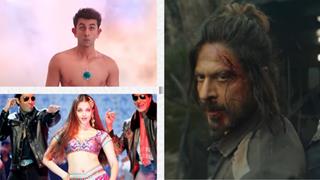Students and faculty of a swish US B-school listened and watched in awe as award-winning filmmaker Romesh Sharma led them on a magical tour of the mystique of
Bollywood, leaving them dazzled and yearning for more.
Marc Modica, a faculty member of the Darden Business School at the University of Virginia best summed up the reaction to Sharma's talk Thursday night on The Evolution
of India's Entertainment Industry: "I've learnt how you turn a creative endeavour into a business endeavour and we've learnt much about how we might turn a business
endeavour into a creative endeavour. I definitely am going to delve into the mysteries of Bollywood."
Modica and 40 MBA students of Darden, rated second in the 2005 Financial Times survey of US business schools, are on the India leg of a Global Business Exchange
(GBE) educational tour during which they will interact with corporates and government officials in New Delhi and Hyderabad for answers to the key question: Why is the
world heading towards India?
Two other factors contributed to making it an enchanting evening. One was Sharma's crisp documentary on Bollywood in which he travelled the road from the early 1900s to
the present day, packing within 30 minutes the romantic heroes of the 1970s, the larger than life Amitabh Bachachan, and the cinematic grandeur of blockbusters like
"Lagaan" and "Devdas".
The other was the ambience - the session was conducted in the very aptly named "Filmi Masala" eatery in a swank mall in the satellite town of Gurgaon. After it was over, a
number of students said they could better understand the graphic wall panels depicting the seven standard features of the Bollywood formula: the mother-son angle, the love
triangle, the villain, the courtroom drama, the fight scene, the item numbers or songs and finally, the happy ending.
"You made 900 movies last year?" asked an incredulous Jonathan England. "Did all of them make money?"
Explained Sharma: "It's like this: maybe one in six movies made instant money. The others made money over time. Then, a lot of money comes in by marketing the music.
"Don't also forget that in a country of a billion plus, it's not only Bollywood where movies are being made. There's a huge regional market and it's doing pretty well. Overall,
everyone is happy," added Sharma, who has made the critically admired "New Delhi Times".
So what makes Bollywood tick?
"It's a question of aesthetics. Western cinema largely goes by Aristotleian aesthetics where everything has a beginning, middle and end. Then there is the Bollywood
aesthetics where you are dealing with nine different emotions like anger, humour, fear and jealousy in one work," Sharma maintained.
He also painted a rosy picture of the future, contending that Bollywood was poised to go global thanks to the vast Indian diaspora and that satellite TV, Internet broadband
and digital technologies would push the process.
Most of the participants declared themselves to be completely hooked on Bollywood and promised to take home DVDs of a few movies.
"It could not be better," Michael Olivera. "I did not know you made so many movies. Being here has been a great experience. I've learnt so much about the various elements
of your movie industry but there's still so much more to learn. I'm definitely going to buy a few DVDs as part of the learning process."
"I've been hearing about Bollywood but hearing it firsthand was mind blowing. It's given me such a different perspective. The dances and music are fantastic and I can't wait to
see a full movie," maintained Mariel Palma.
The Darden School has an endowment of $260 million and an annual budget of $55 million. It's dean, Robert F. Bruner, was here last month to explore the possibilities of
opening shop in India either through tie-ups with institutions like the Indian Institutes of Technology or of the Indian Institutes of Managements, or on its own.
A little over 40 Indians, the largest foreign group, are currently enrolled for MBA programmes at the 600-strong Darden School.
Glimpse into Bollywood dazzles US B-school students
Monday, January 09, 2006 15:02 IST



















